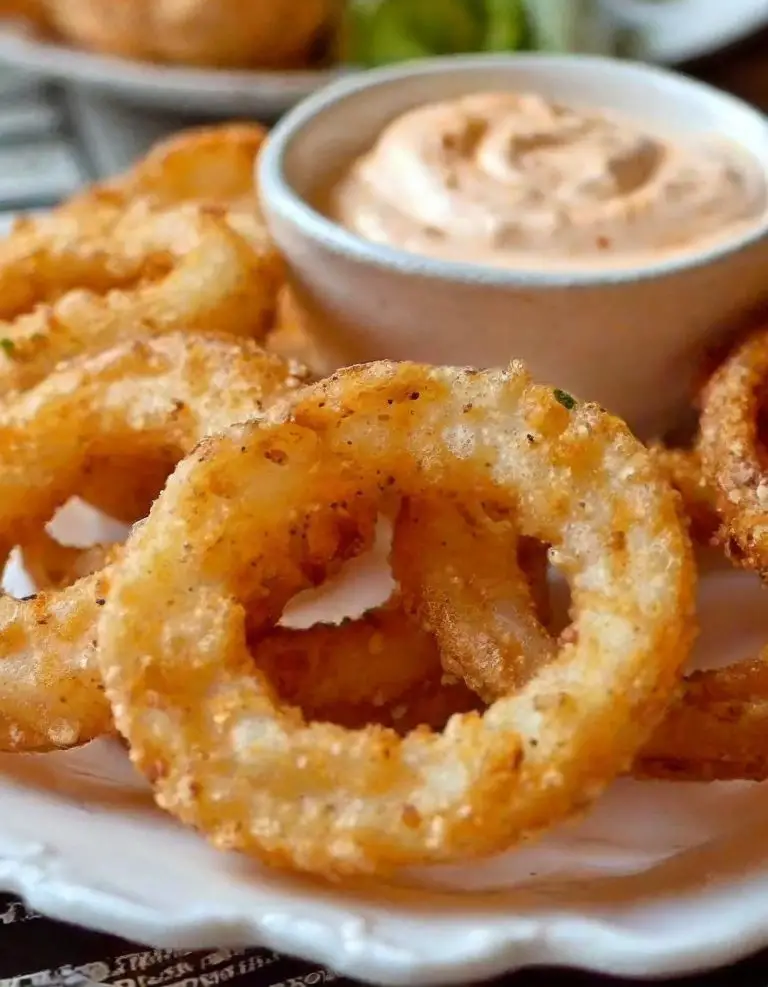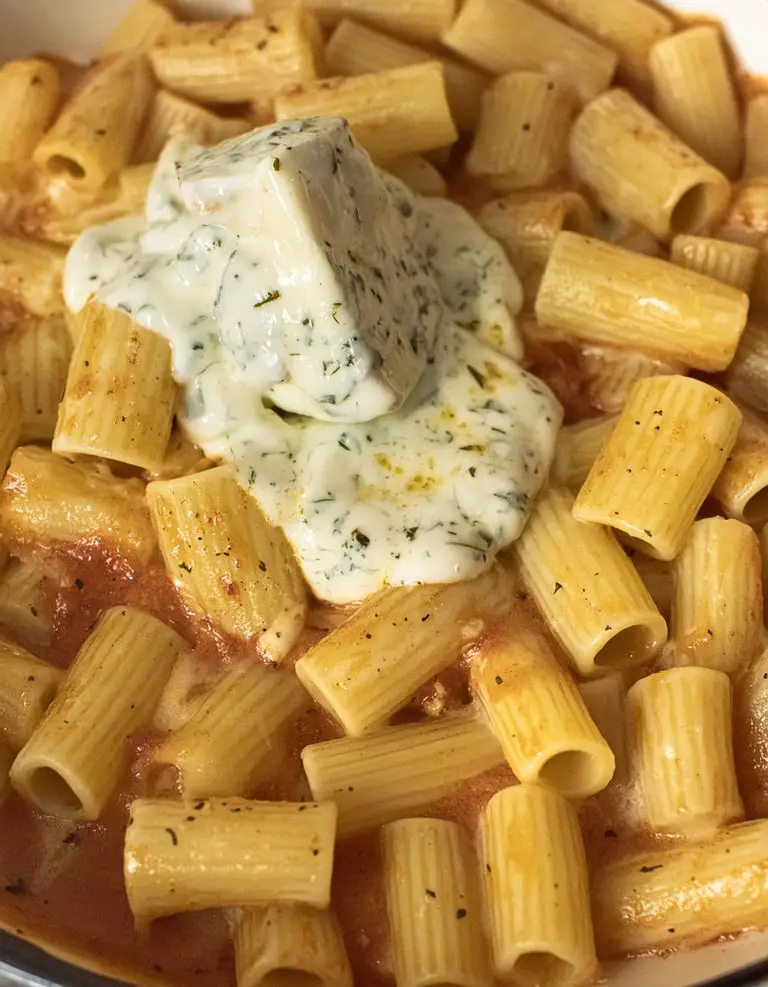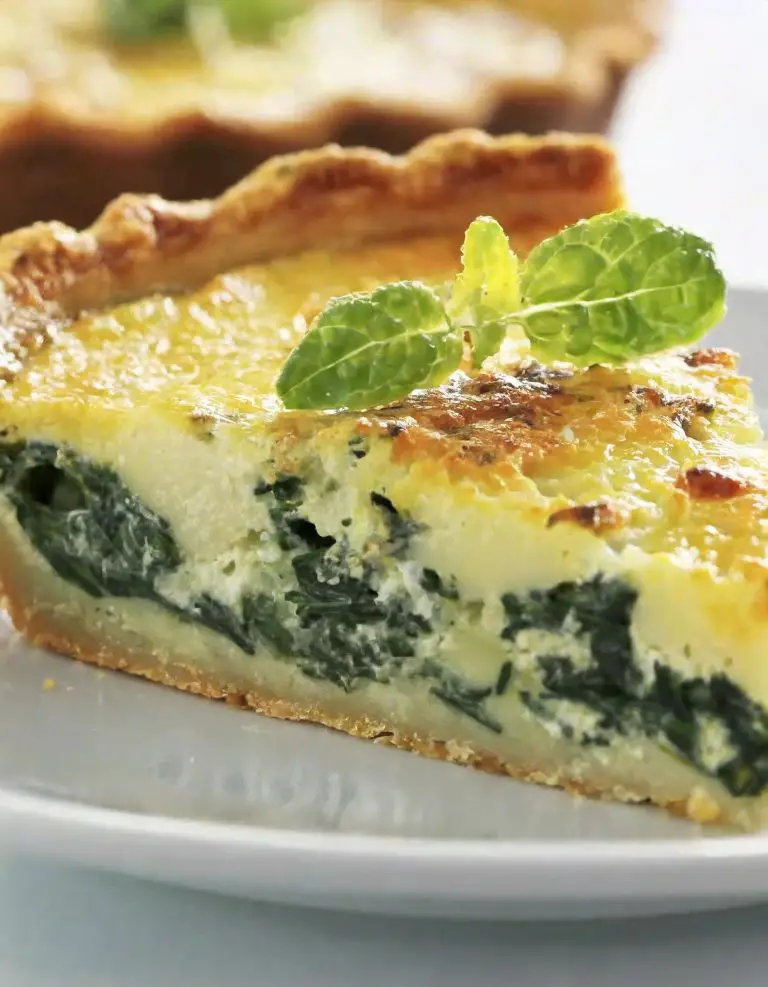Hollandaise Sauce
Let’s dive into a classic Hollandaise sauce recipe, perfect for enhancing dishes like Eggs Benedict, steamed vegetables, or fish. This smooth, buttery sauce, known for its delicate balance of richness and acidity, has been a cornerstone of French cuisine for centuries.
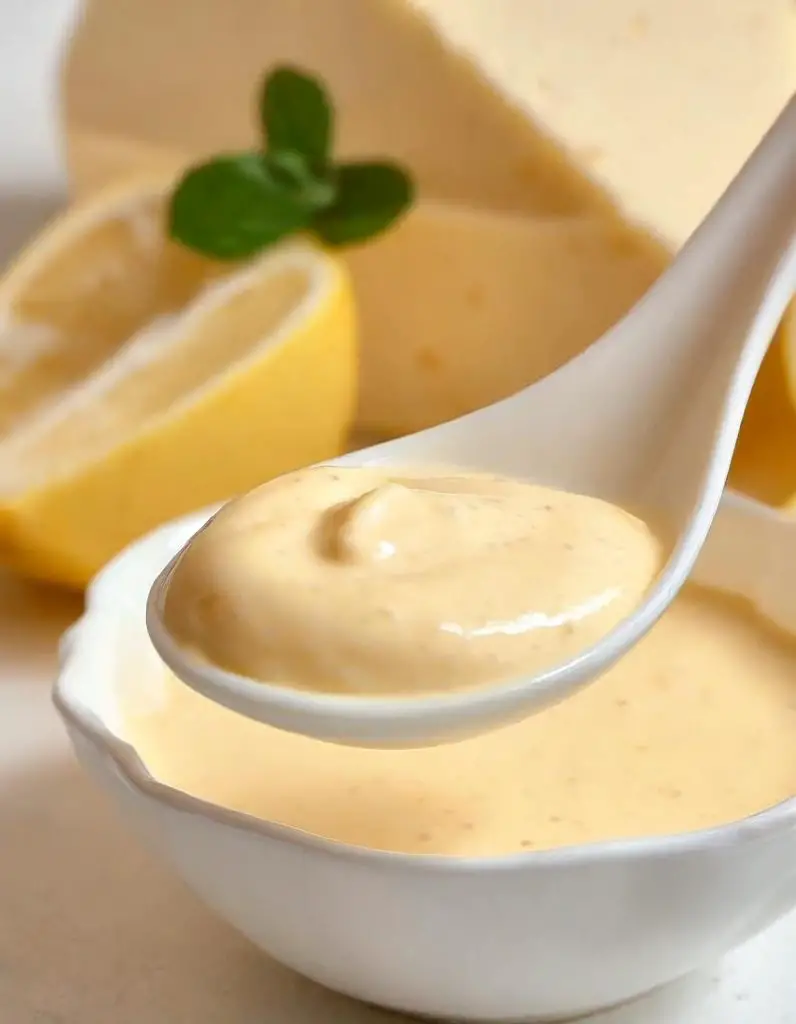
Made primarily from butter, egg yolks, and lemon juice, it’s emulsified over gentle heat to achieve its iconic creamy texture. While it requires some patience and attention to detail, mastering Hollandaise sauce can elevate your culinary skills and impress at any brunch or dinner.
Ingredients Needed for This Recipe
- 4 large egg yolks
- 1 tablespoon lemon juice (fresh is best)
- 1/2 cup (115g) unsalted butter, melted
- 1/2 teaspoon salt
- A pinch of cayenne pepper (optional, for a little heat)
- A pinch of white pepper (optional, for seasoning)
Instructions for Making Hollandaise Sauce
- Prepare the Double Boiler: Fill a saucepan with about an inch of water and bring it to a simmer over low heat. Find a heatproof bowl that fits snugly over the saucepan without touching the water to create a double boiler.
- Whisk Egg Yolks and Lemon Juice: In the heatproof bowl, whisk together the egg yolks and lemon juice until the mixture is well blended and slightly thickened. This initial whisking is crucial for the sauce’s texture.
- Cook Over Gentle Heat: Place the bowl over the simmering water (ensure the bottom doesn’t touch the water) and continue to whisk vigorously. The goal is to slowly cook the egg yolks by whisking constantly to prevent them from scrambling.
- Add Melted Butter: Slowly drizzle in the melted butter while whisking constantly. Start with a few drops at a time and then a slow, steady stream, whisking until the sauce thickens and doubles in volume.
- Season the Sauce: Once the sauce has thickened, remove from heat. Whisk in salt, and if using, cayenne and white pepper. Taste and adjust the seasoning as needed.
- Serve Immediately: Hollandaise sauce is best served fresh and warm. If it begins to thicken too much upon standing, you can whisk in a few drops of warm water to reach the desired consistency.
Tips for Perfecting the Recipe
Quality of Ingredients: Start with high-quality ingredients. Fresh, organic eggs and high-quality butter can significantly impact the flavor and consistency of your Hollandaise sauce. The freshness of the lemon juice is also paramount; freshly squeezed lemon juice offers a bright acidity that bottled juice simply cannot match.
Temperature Control: One of the critical challenges in making Hollandaise sauce is maintaining the right temperature. The eggs must be warmed gently to prevent them from scrambling. Keep the heat low and remove the sauce from the heat source if it starts to get too hot. A digital thermometer can be a great asset here, aiming for a safe but gentle heat between 145°F to 165°F (63°C to 74°C).
Consistent Whisking: Constant, vigorous whisking is crucial for achieving the smooth, creamy texture that Hollandaise is famous for. This not only helps to incorporate air but also prevents the egg yolks from overheating and curdling. Consider using a balloon whisk for this task, as its shape is ideal for incorporating air and ensuring even mixing.
Incorporating the Butter: The butter should be melted and slightly cooled before slowly drizzling it into the egg yolk mixture. Adding the butter too quickly can cause the emulsion to break, leading to a sauce that is oily rather than smooth and cohesive. Begin with a few drops at a time, gradually increasing to a thin stream as you continue to whisk vigorously.
Seasoning and Adjusting: Seasoning is the final step in perfecting Hollandaise sauce. Salt is essential, but the optional additions of cayenne and white pepper can enhance the sauce’s flavor profile. Be sure to taste as you season, adjusting the levels of lemon juice and seasoning to suit your palate. Remember, the sauce should have a balance of richness from the butter, acidity from the lemon, and a gentle kick from the seasoning.
Serving Suggestions
Eggs Benedict: Perhaps the most classic pairing, Hollandaise sauce over a poached egg, Canadian bacon, and English muffin is a brunch staple. The rich sauce complements the runny yolk and salty bacon perfectly.
Vegetables: Drizzle Hollandaise over steamed asparagus, broccoli, or artichokes for a decadent touch. The sauce adds a rich, buttery layer that enhances the natural flavors of the vegetables.
Fish and Seafood: Hollandaise serves as a luxurious accompaniment to fish, particularly salmon and cod. Its creamy texture and lemony notes elevate the delicate flavors of the seafood.
Steak: For a twist on the traditional, try Hollandaise on a perfectly cooked steak. The sauce adds a level of richness that pairs wonderfully with the meat’s savory depth.
Mousseline Sauce: By folding whipped cream into your Hollandaise, you can create a lighter, airier version known as Mousseline or Chantilly sauce, excellent with lighter dishes or as a dip.
Storage Tips
Short-term Storage: Hollandaise sauce is best enjoyed fresh, but if you must store it, keep it in a thermos or a container placed in a warm water bath to maintain its temperature for up to an hour without breaking.
Reheating: Gently reheat Hollandaise sauce over a double boiler while whisking constantly. Avoid using a microwave as it can heat the sauce unevenly and cause it to split.
Freezing: It’s generally not recommended to freeze Hollandaise sauce as the emulsion can break upon thawing, resulting in a separated texture. However, if you choose to freeze it, thaw it in the refrigerator and then reheat gently, being prepared to re-emulsify if necessary.
Preventing Skin Formation: If you need to store the sauce even briefly, place a piece of cling film directly on the surface of the sauce to prevent a skin from forming.
Frequently Asked Questions
Can I make Hollandaise sauce in advance? Hollandaise is best made just before serving, as it doesn’t hold or reheat well over long periods. However, if necessary, you can keep it warm for a short time as described in the storage tips.
Can I make Hollandaise sauce without a double boiler? Yes, you can. If you don’t have a double boiler, you can use a heatproof bowl over a pot of simmering water. Ensure the bottom of the bowl does not touch the water, as indirect heat is key to gently cooking the egg yolks without scrambling them.
How can I flavor my Hollandaise sauce? While the classic Hollandaise is delightful on its own, you can experiment with various flavorings. Try adding chopped fresh herbs such as dill, tarragon, or chervil. A dash of hot sauce, Worcestershire sauce, or even a sprinkle of smoked paprika can add a new dimension to the sauce.
Is it possible to make Hollandaise sauce healthier? Traditional Hollandaise sauce is inherently rich due to its butter content. For a lighter version, some chefs use clarified butter or a mixture of butter and olive oil to reduce saturated fats. You can also try using more lemon juice for added flavor without additional fat.
Why did my Hollandaise sauce turn out too thick? If your Hollandaise sauce is thicker than desired, it might have been overcooked or contained too much butter. You can adjust the consistency by whisking in a few teaspoons of warm water until it reaches your preferred texture.
Can I use lime juice instead of lemon juice? Absolutely. Lime juice can be used as a substitute for lemon juice if you prefer its flavor or if that’s what you have on hand. It will give the sauce a slightly different but equally delicious citrus note.
Hollandaise Sauce
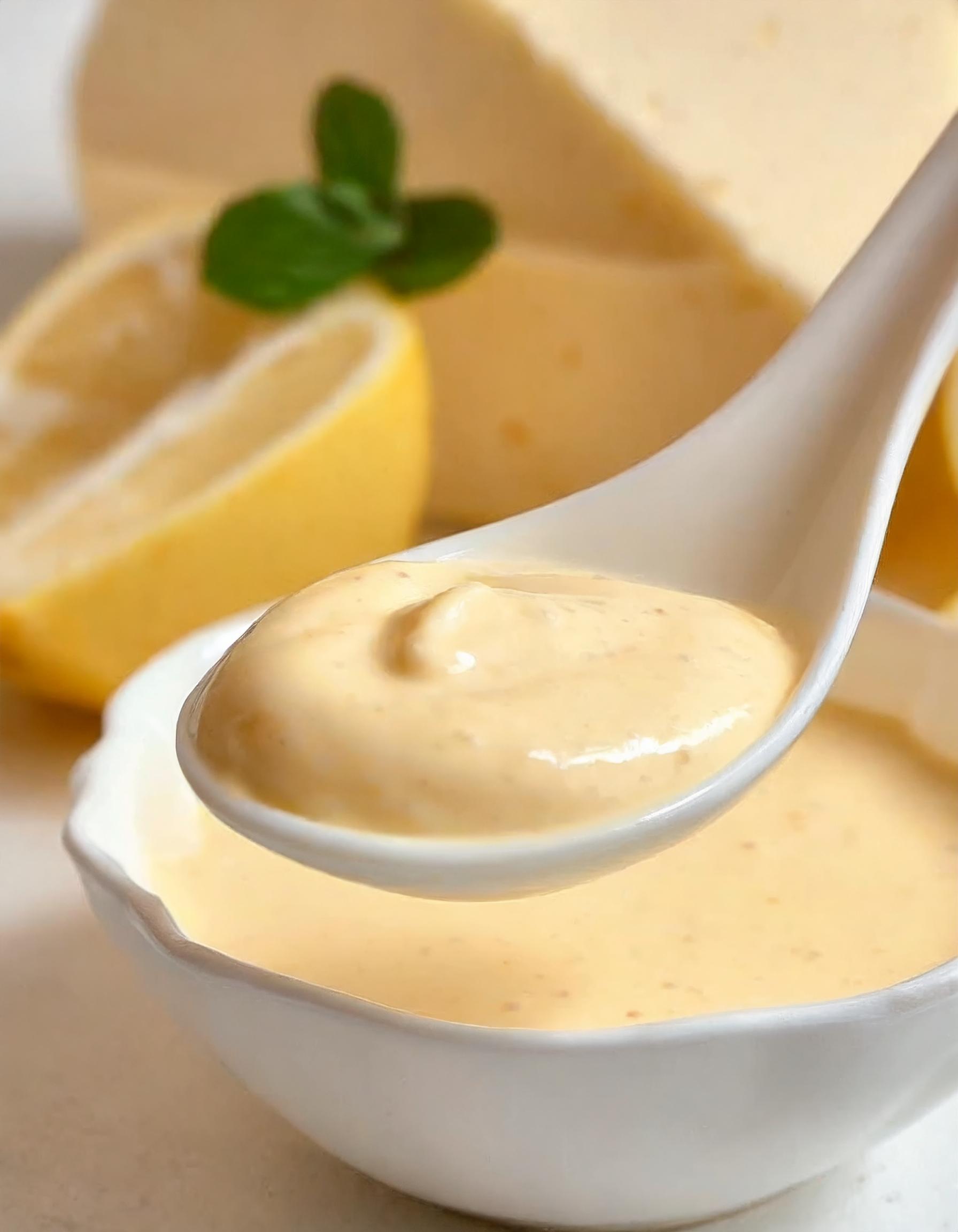
Ingredients
- 4 large egg yolks
- 1 tablespoon lemon juice fresh is best
- 1/2 cup 115g unsalted butter, melted
- 1/2 teaspoon salt
- A pinch of cayenne pepper optional, for a little heat
- A pinch of white pepper optional, for seasoning
Instructions
- Prepare the Double Boiler: Fill a saucepan with about an inch of water and bring it to a simmer over low heat. Find a heatproof bowl that fits snugly over the saucepan without touching the water to create a double boiler.
- Whisk Egg Yolks and Lemon Juice: In the heatproof bowl, whisk together the egg yolks and lemon juice until the mixture is well blended and slightly thickened. This initial whisking is crucial for the sauce’s texture.
- Cook Over Gentle Heat: Place the bowl over the simmering water (ensure the bottom doesn’t touch the water) and continue to whisk vigorously. The goal is to slowly cook the egg yolks by whisking constantly to prevent them from scrambling.
- Add Melted Butter: Slowly drizzle in the melted butter while whisking constantly. Start with a few drops at a time and then a slow, steady stream, whisking until the sauce thickens and doubles in volume.
- Season the Sauce: Once the sauce has thickened, remove from heat. Whisk in salt, and if using, cayenne and white pepper. Taste and adjust the seasoning as needed.
- Serve Immediately: Hollandaise sauce is best served fresh and warm. If it begins to thicken too much upon standing, you can whisk in a few drops of warm water to reach the desired consistency.


